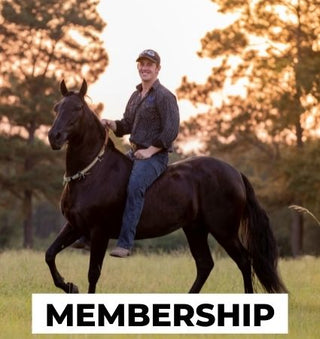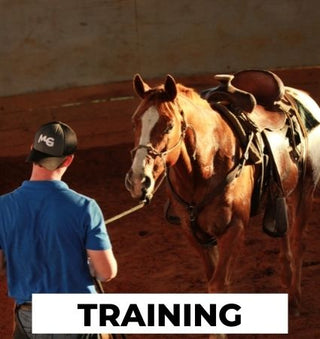Horsemanship is an art that requires understanding, patience, and the ability to adapt to the unique temperament of each horse. As a dedicated horsemanship clinician, I've learned that the key to success lies in embracing the horse's natural sensitivity and using it to our advantage. Here, I'll share my journey and some valuable lessons learned along the way.
The Challenge of Sensitive Horses
Working with sensitive horses can be challenging, especially when they have a "go go go" mentality. It's crucial to understand their needs and work with their natural instincts rather than against them. Sensitive horses require a handler who can balance firmness with empathy, ensuring that their energy is directed positively.
The Journey to Becoming a Clinician
My journey began with extensive study and practice. I devoured every book and video on horsemanship I could find. However, I soon realized that the methods that worked in theory didn't always apply to real-life situations, especially with different horse temperaments. Traditional techniques often fell short, prompting me to seek a deeper understanding and a more personalized approach.
Lessons from Passive Freecoats
I discovered that traditional methods weren't effective for all horses. Passive freecoats, for instance, didn't respond well to being run in circles. This realization prompted me to rethink my approach. Instead of trying to wear down these horses, I began focusing on their individual responses and adjusting my techniques accordingly.
Embracing Sensitivity
Instead of trying to wear down sensitive horses, I suggest using their sensitivity to your advantage. This means asking them to perform tasks in a way that makes them want to comply to avoid discomfort. By harnessing their natural responsiveness, we can create a more harmonious and productive working relationship.
Quieter Doesn’t Always Mean Better
Being overly cautious around sensitive horses can lead to them becoming more reactive. Instead, I advocate for a balanced approach where the handler remains calm but assertive, helping the horse focus and respond appropriately. It's about finding the right level of interaction that keeps the horse engaged and attentive without overwhelming them.
Working with Sensitivity
Sensitive horses can be trained similarly to high-energy dogs. By channeling their sensitivity into positive behaviors, you can achieve a harmonious working relationship. Just as you would with a Border Collie or a Blue Heeler, use their natural energy and drive to your advantage, guiding them towards desired behaviors.
Practical Demonstration
In a practical demonstration, I introduced myself to a horse named Norman by asking him to back up, setting the tone for our interaction and establishing leadership and trust from the start. This initial interaction is crucial for setting boundaries and demonstrating that you are in charge, without being harsh or aggressive.
Leadership and Control
Establishing authority early on is crucial. With sensitive horses, this can often be achieved with minimal effort, as their responsiveness can be harnessed effectively. It's the difference between driving a heavy truck and a sports car – with the latter, you only need slight adjustments to achieve the desired response.
Precision in Training
Consistency and precision are vital when working with sensitive horses. By maintaining specific cues and responses, you ensure clear communication and build trust with the horse. This involves being very specific with your signals and ensuring that your requests are clear and consistent every time.
Conclusion
Horsemanship is a nuanced field that requires understanding the unique temperaments of each horse. By embracing their sensitivity, adjusting traditional methods, and maintaining consistent communication, you can build a strong and harmonious relationship with your horse. Remember, horse sense isn't common sense, and learning to work with these magnificent animals is a journey of continual learning and adaptation.
Check out more free training resources HERE!









